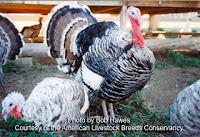Greetings from Baker Heritage Farms;
Our 2013 field planning is well underway. In reality, our production fields will all be "test" gardens in 2013, as we have never tried growing many of the vegetables we are planning to plant, and those we have tried were not necessarily successful. We are planning to plant 12 plots of 1/8 acre each (55'x100'). The planting dates are tentative and actual planting will depend on weather and soil conditions.
We hope to direct seed cabbage, lettuce, and onions in February, followed by beans, beets, and radish in March. There are mixed reviews on direct seeding versus transplanting for cabbage and beets, so we will try direct seeding in 2013. If weather does not cooperate, we can extend our February seeding into March. We also have an opportunity to plant cabbage and lettuce latter in the fall if the spring planting does not work.
We will start our pepper and tomato seeds in February for later transplanting.
In April we plan on direct seeding corn, cucumber, gourds, muskmelon, okra, squash, and watermelon. We will also begin transplanting peppers and tomatoes in April.
At this time we are planning on having 4 plots in cover crops. In February we will be planting sweet clover cover crop in one plot. In March we will plant Buckwheat cover crop in one plot, and in April we will plant Cow Peas cover crop in one plot, and a mixture of Red Clover and Australian Winter Peas in one plot. The type of cover crop, and the number of plots in cover crop may change as we get closer to planting. We plant to have at least 3 plots (1 in each field) in cover crop at all times.
We will be double-cropping/companion planting cabbage and onions; lettuce and radish; and carrots and tomatoes. We will be companion planting corn, beans and cucumber using a modified three-sisters method.
Watermelon and squash will most likely be planted in separate areas as they will require complete rotation each year (watermelon and squash will not follow each other, which will somewhat restrict where they can be planted). It is possible that the watermelon may be planted in one of the cover crop plots, however, that is yet to be determined.
By May we should have our spring crops all planted.
Our next step is to plan the purchase of seeds. While this may seem an easy task, we have already learned that it will not be so easy. Our intention is to plant non-hybrid, non-GMO, non-treated, and non-patented heirloom production crops. In addition, all of our crops will be "certified" organic. While it can be presumed that heirloom seeds would be organic, we have found that this is not the case. If you intend to have organic heirloom crops, take heed. Many heirloom gardeners use herbicides and pesticides to reduce potential damage to crops. Unless the products they use are "certified" organic, you will not be able to represent your crops as organic. While we are not pursuing organic certification, it is important that we still follow all "certified" organic standards. Then we can represent our crops as organic until we reach $5,000 in gross sales. In addition, our crops will be grown "all-natural", which, to us, means even more stringent growing habits then just organic. This will be very important for our marketing strategy. We also need to be good stewards of the land and provide healthy products.
Once we determine what type of seed we will be purchasing, we can complete the planning stage, which will include determining how much seed for each crop/plot based on seed/plant spacing and row spacing, which will allow us to order the proper number of seed.
We will also need to start planning for irrigation. At this time, we are planning to use soaker hoses, but may also use some drip irrigation. Once we determine the number of rows for each plot (as well as the direction of the rows) we will be able to better plan our irrigation needs.
In addition to the planning, work continues on the turkey run and chicken coop fences. Sanitizing the brooder equipment will be completed prior to the first arrivals, and then will have to be re-santized for the next batch. The parameter fence around the production fields needs to be installed and also around the area where we plan to plant the squash and/or watermelon.
There is still a lot of work to be done before planting season starts. If you are planning to start a backyard or small acreage farming operation, now is the time to complete your planning as the real work will need to be started in ernest in January (and no, weather cannot be used as an excuse, otherwise, you will never get started).
Until next time,
Blessings from Baker Heritage Farms
"The earth brought forth vegetation, plants yielding seed according to their own kinds, and trees bearing fruit in which is their seed, each according to its kind. And God saw that it was good." Genesis 1:12
























